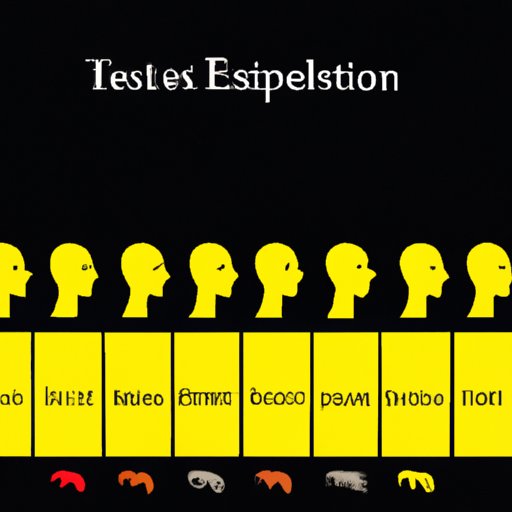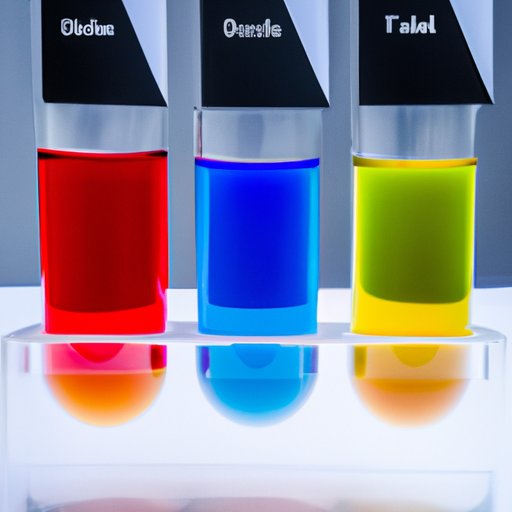
Overview of the Science Behind Does Color Affect Taste
The question of whether color affects taste has been a topic of debate for centuries. To answer this question, it is important to understand the science behind how we perceive colors and flavors. In this article, we will explore the research on color and flavor perception, as well as the role of expectations in taste perception.
Introduction to Color Theory
Color theory is the study of how humans perceive and interact with colors. According to color theorist Johannes Itten, “Color is the most relative medium in art.” This means that our perception of color is based on our individual experiences and expectations. For example, a red apple may appear differently to different people due to their unique perspectives. Additionally, the presence of other colors will also affect how we perceive color.
Research on Color and Flavor Perception
Research has found that color can have an effect on our perception of flavor. A study published in the journal Flavour found that when participants tasted flavored juices, they were more likely to rate them as being sweeter and more intense when they had added food coloring that matched the flavor. Additionally, a study published in the journal Food Quality and Preference found that the color of a food or drink can influence the intensity of its perceived flavor.

The Role of Expectations in Taste Perception
A key factor in understanding how color affects taste is the role of expectations. Our expectations about a food or beverage can influence how we perceive its flavor. For example, if you expect a red drink to be sweet, you may find that it tastes sweeter than if you had no expectations about the flavor. Additionally, research has shown that our expectations about a food or drink can even override our actual taste experience.
Step-By-Step Guide to Conducting the Project
Conducting a science project to test whether color affects taste can be a fun and educational activity. Here is a step-by-step guide to conducting the project:
Gather Materials Needed for the Experiment
To conduct the experiment, you will need several different colored drinks, such as juices or sodas, as well as several blindfolds. You will also need a notebook to record your observations.
Create Experiments to Test Whether Color Impacts Taste
Next, you will need to create experiments to test whether color impacts taste. You can do this by having participants taste two different colored drinks while wearing a blindfold. Ask the participants to rate the intensity of the flavor of each drink on a scale from 1 to 10. Repeat this experiment several times with different colored drinks.
Document Results of Experiments
Be sure to document the results of your experiments in your notebook. It is important to note any patterns or trends that emerge in the data. Additionally, make sure to record any unexpected results or anomalies.

Interviews With Experts on the Subject
In addition to conducting experiments, interviews with experts in the field can provide valuable insight into the impact of color on taste perception. To identify experts in the field, start by searching online for academics who specialize in color theory and flavor perception. Once you have identified potential experts, contact them to set up an interview.
Discuss Their Views on the Impact of Color on Taste
During the interviews, ask the experts about their views on the impact of color on taste. Do they believe that color can influence our perception of flavor? Are there any factors, such as expectations or the presence of other colors, that can influence the impact of color on taste?

Analysis of Results from the Project
Once you have collected all of the data from your experiments and interviews, it is time to analyze the results. Begin by comparing the results of the experiments. Are there any patterns or trends that emerge in the data? Do the results support the hypothesis that color affects taste?
Discuss Any Patterns or Trends Discovered
Next, discuss any patterns or trends that you discovered in the data. Can you draw any conclusions about the impact of color on taste perception? Additionally, consider any unexpected results or anomalies that emerged in the data.
A Summary of What Was Learned
The results of the project indicate that color can have an effect on our perception of flavor. Research has found that when we are presented with a colored food or drink, we are more likely to rate it as being sweeter and more intense than when it is uncolored. Additionally, our expectations about a food or drink can influence our perception of its flavor. Through this project, we can conclude that color can have a significant impact on our taste perception.
Summarize Findings of the Project
In summary, this project demonstrates that color can have an effect on our perception of flavor. Research indicates that when we are presented with a colored food or drink, we are more likely to rate it as being sweeter and more intense than when it is uncolored. Additionally, our expectations about a food or drink can influence our perception of its flavor.
Discuss Implications of the Results
The implications of these findings are far-reaching. Understanding the impact of color on taste perception can help us to make informed decisions about what foods and beverages we consume. Additionally, this knowledge can be used to create products that appeal to consumers and maximize their enjoyment of a product.
Ideas for Further Investigation and Experiments
This project provides an introduction to the science behind color and taste perception. There are many areas of inquiry related to this topic that could be explored further. Here are some suggestions for refining the experiments and exploring other areas of inquiry related to color and taste:
Suggestions for Refining Experiments
To refine the experiments, consider adding additional colors to the drinks and testing how this affects the perceived intensity of the flavor. Additionally, try testing different types of foods to see if the results vary. Finally, consider using different scales to measure the intensity of the flavor.
Other Areas of Inquiry Related to Color and Taste
Other areas of inquiry related to color and taste include the impact of lighting on flavor perception, the relationship between color and texture, and the effects of packaging on taste perception. Additionally, the role of cultural influences on flavor perception could be explored.
Conclusion
The results of this project demonstrate that color can have an effect on our perception of flavor. By understanding the science behind color and flavor perception, we can make informed decisions about what we consume. Additionally, this knowledge can be used to create products that appeal to consumers and maximize their enjoyment of a product.
(Note: Is this article not meeting your expectations? Do you have knowledge or insights to share? Unlock new opportunities and expand your reach by joining our authors team. Click Registration to join us and share your expertise with our readers.)
